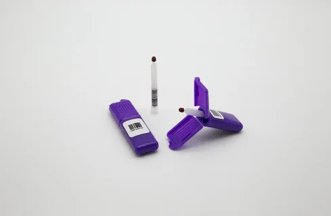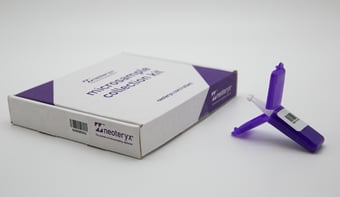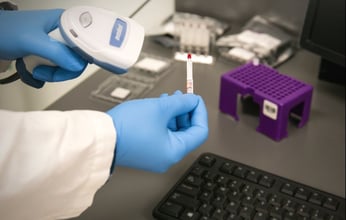Share this
blood handling disasters: what could go wrong?
by Neoteryx Microsampling on Apr 25, 2017 6:56:00 AM
 Shipping and handling blood samples can be challenging. Even with strict procedural guidelines and handling safeguards in place, errors in the shipping, handling, and storage of blood samples can happen. These errors can be costly and can cause considerable stress and put people at risk.
Shipping and handling blood samples can be challenging. Even with strict procedural guidelines and handling safeguards in place, errors in the shipping, handling, and storage of blood samples can happen. These errors can be costly and can cause considerable stress and put people at risk.
What could go wrong with blood handling?
Several blood handling disasters may occur, including improper collection procedures, sample identification errors, mislabeling patient identification, botching blood handling methods, shipping mistakes, and mixing up or losing specimens. On the diagnosis side, sample contamination and misinterpretation of results have kept malpractice attorneys busy for decades.
5 Most Common Blood Handling Mistakes
Lab Manager cites the five most common mistakes in handling blood and other biological specimens, or samples. They include:
- Handwriting Labels: Handwriting is quick and convenient but can be misread or smeared.
- Using the Wrong Pre-Printed Labels: Labels are available in different materials for different applications. For example, some materials will not adhere to frozen containers. The wrong label can fall off.
- Matching the Wrong Labels to the Wrong Containers: Usually, this is a problem when handling large sample batches at once.
- Using the Wrong the Barcode: Barcodes are effective identification for biological specimens and blood samples. Neglecting to attach the proper barcode can jeopardize the determination of a sample.
- Labeling Protocol Only for One Lab: Sometimes samples are sent from one lab to other locations. Labels must conform to the biospecimen identification standards set by the National Cancer Institute.
Blood Testing Horror Stories
Blood sampling, handling, testing, and diagnoses can go wrong and create unintended results with severe consequences. A Milwaukee Journal Sentinel article reported a list of events that occurred as a result of weak oversight in labs that performed blood testing. Their mistakes included inadequate sample handling procedures and subsequent misdiagnoses.
- In 2011, a man was misdiagnosed with HIV. Before the incorrect diagnosis was recognized, he and his wife separated, reportedly because of the stress created by the situation.
- The results of a woman’s early pregnancy blood test showed that everything was fine for both the mother and fetus. Seven months later, the baby was born critically ill with a blood disorder that could have been treated; the infant died three days later.
- Lab results taken three months after a baby girl was born showed that the man presumed to be the father was not. The couple split up. Almost four years later, the California lab reported that the samples used earlier in the initial tests had been switched.
According to the College of American Pathologists (CAP), most blood handling errors occur in the pre-analytic stage at the time the samples are collected. The CAP has established protocols for laboratories now to reject any sample label that is mismatched with the corresponding requisition, or is incomplete, partial, or in any way questionable.
Correct Sample ID from Collection to Data Delivery
 With all of this in mind, the Neoteryx Microsampling Team at Trajan Scientific and Medical designed its Mitra® microsampling devices and related products to include ID Barcoding for full chain of custody.
With all of this in mind, the Neoteryx Microsampling Team at Trajan Scientific and Medical designed its Mitra® microsampling devices and related products to include ID Barcoding for full chain of custody.
The ID barcodes are included on the device's plastic housing and on each microsampler contained within the plastic housing.
 When the microsampling devices are deployed to patients or research volunteers in Sample Collection Kits for blood collection at home, the Kit box and its specimen bag and mailing envelope will also include the same ID Barcode.
When the microsampling devices are deployed to patients or research volunteers in Sample Collection Kits for blood collection at home, the Kit box and its specimen bag and mailing envelope will also include the same ID Barcode.
 Once in the lab, sampled microsampling devices can be scanned into a secure computer system for proper identification and chain of custody within the lab, and beyond.
Once in the lab, sampled microsampling devices can be scanned into a secure computer system for proper identification and chain of custody within the lab, and beyond.
If a lab is processing hundreds of microsamples at once, they can custom order Mitra 96-Autoracks™ that are labeled with barcodes to help them identify each batch of samples.
/hemaPEN%20in%20the%20Lab_FEB%202023%20(approved)/hemapen-scan.jpg?width=353&height=239&name=hemapen-scan.jpg) The hemaPEN® microsampling device also includes a scannable barcode and follows a similar sample identification process.
The hemaPEN® microsampling device also includes a scannable barcode and follows a similar sample identification process.
This ID barcode approach to microsampling helps study managers and laboratories ensure correct sample identification from the time the blood samples are collected from an individual through mailing samples to the lab, through sample scanning and processing until inputting of blood test results via a secured computer data system.
It is imperative to make sure that the barcode on each device matches the box and components of its Sample Collection Kit. Checking the barcodes is part of the Quality Control (QC) Process at Trajan Scientific and Medical.
Learn more about microsampling here:

Image Credits: Trajan, Neoteryx, Shutterstock
Share this
- Microsampling (206)
- Research, Remote Research (119)
- Venipuncture Alternative (105)
- Clinical Trials, Clinical Research (83)
- Mitra® Device (73)
- Therapeutic Drug Monitoring, TDM (51)
- Dried Blood Spot, DBS (39)
- Biomonitoring, Health, Wellness (30)
- Infectious Disease, Vaccines, COVID-19 (24)
- Blood Microsampling, Serology (23)
- Omics, Multi-Omics (21)
- Decentralized Clinical Trial (DCT) (20)
- Specimen Collection (18)
- Toxicology, Doping, Drug/Alcohol Monitoring, PEth (17)
- Skin Microsampling, Microbiopsy (14)
- hemaPEN® Device (13)
- Preclinical Research, Animal Studies (12)
- Pharmaceuticals, Drug Development (9)
- Harpera Device (7)
- Industry News, Microsampling News (5)
- Antibodies, MAbs (3)
- Company Press Release, Product Press Release (3)
- Environmental Toxins, Exposures (1)
- July 2025 (1)
- May 2025 (1)
- April 2025 (2)
- December 2024 (2)
- November 2024 (1)
- October 2024 (3)
- September 2024 (1)
- June 2024 (1)
- May 2024 (1)
- April 2024 (4)
- March 2024 (1)
- February 2024 (2)
- January 2024 (4)
- December 2023 (3)
- November 2023 (3)
- October 2023 (3)
- September 2023 (3)
- July 2023 (3)
- June 2023 (2)
- April 2023 (2)
- March 2023 (2)
- February 2023 (2)
- January 2023 (3)
- December 2022 (2)
- November 2022 (3)
- October 2022 (4)
- September 2022 (3)
- August 2022 (5)
- July 2022 (2)
- June 2022 (2)
- May 2022 (4)
- April 2022 (3)
- March 2022 (3)
- February 2022 (4)
- January 2022 (5)
- December 2021 (3)
- November 2021 (5)
- October 2021 (3)
- September 2021 (3)
- August 2021 (4)
- July 2021 (4)
- June 2021 (4)
- May 2021 (4)
- April 2021 (3)
- March 2021 (5)
- February 2021 (4)
- January 2021 (4)
- December 2020 (3)
- November 2020 (5)
- October 2020 (4)
- September 2020 (3)
- August 2020 (3)
- July 2020 (6)
- June 2020 (4)
- May 2020 (4)
- April 2020 (3)
- March 2020 (6)
- February 2020 (3)
- January 2020 (4)
- December 2019 (5)
- November 2019 (4)
- October 2019 (2)
- September 2019 (4)
- August 2019 (4)
- July 2019 (3)
- June 2019 (7)
- May 2019 (6)
- April 2019 (5)
- March 2019 (6)
- February 2019 (5)
- January 2019 (8)
- December 2018 (3)
- November 2018 (4)
- October 2018 (7)
- September 2018 (6)
- August 2018 (5)
- July 2018 (8)
- June 2018 (6)
- May 2018 (5)
- April 2018 (6)
- March 2018 (4)
- February 2018 (6)
- January 2018 (4)
- December 2017 (2)
- November 2017 (3)
- October 2017 (2)
- September 2017 (4)
- August 2017 (2)
- July 2017 (4)
- June 2017 (5)
- May 2017 (6)
- April 2017 (6)
- March 2017 (5)
- February 2017 (4)
- January 2017 (1)
- July 2016 (3)
- May 2016 (1)
- April 2016 (2)


No Comments Yet
Let us know what you think